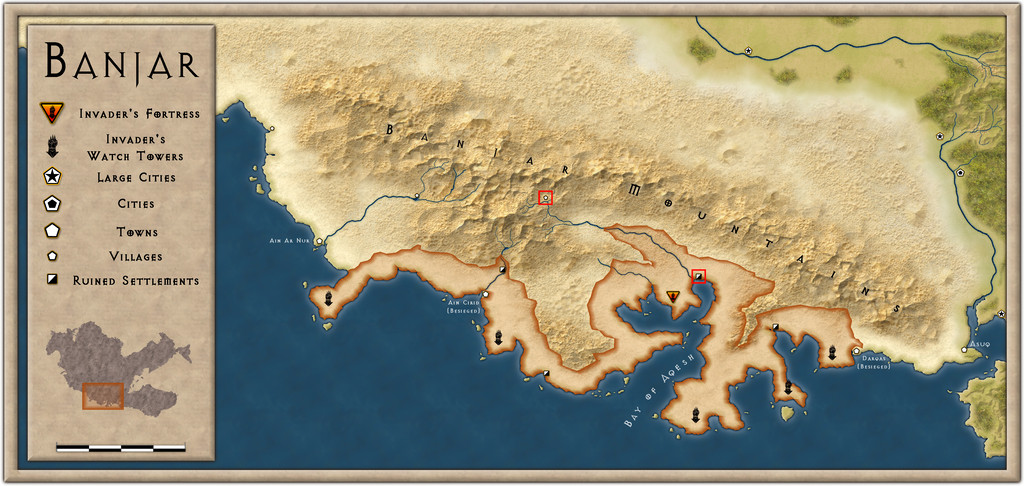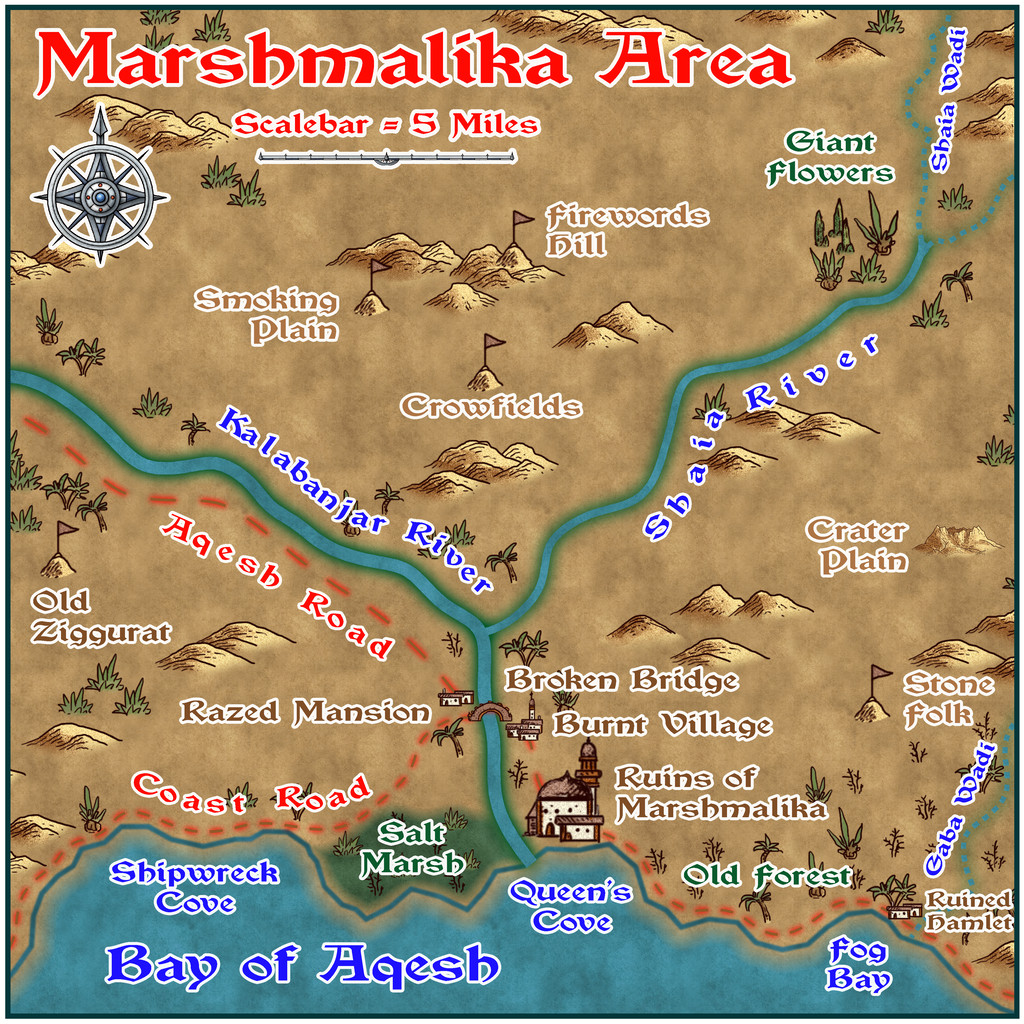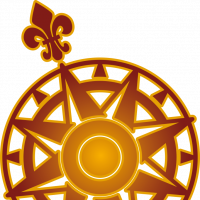Community Atlas: The Marshmalika Area of Kumarikandam
 Wyvern
🖼️ 273 images Cartographer
Wyvern
🖼️ 273 images Cartographer
Completing my trip to the Banjar region of Kumarikandam recently, after the Sussara Region, I've now been visiting part of the coast by the mouth of the Kalabanjar River, the tiny red-square-marked ruined settlement at the head of the Bay of Aqesh on the area map from the Atlas (not the one in the mountains - that's Sussara!):
The map I'd generated in advance from the Inkwell Ideas "Ruins" dice set only covered part of the settlement, and given the large scale of the above map, as with the Sussara Region, I knew I'd have to begin with an area map to fit it into anyway. Having already prepared a 20-mile-square map for Sussara, I simply continued the process here, using the same Scorching Sun style for consistency, having generated a list of ideas for features on this map using the same random tables as for Sussara (albeit re-rolling any duplicates with that map), while taking into account the very different circumstances for this part of Banjar - invaded and devastated by incomers in the relatively recent past. Thus we arrive at the Marshmalika Area map ("Marshmalika" = Queen's Cove, incidentally):
Descriptions of what's where (with how recent some of them are), and the significance of the various items shown will be provided as text and PDF files in the Atlas, as usual, although it's fair to say there are battlefields, and many signs of devastation (not all created by the invaders; war is war, after all). Oh, and there are a LOT of ghosts. They make the invaders feel REALLY uncomfortable, although all they do is stand and stare (mostly). In ever increasing numbers. At any destroyed formerly inhabited place. By day and night, continually. Until the invaders leave.










Comments
As these "ghostly" comments may indicate, I'd had a few ideas of my own as to what else could have been happening in the area, partly also drawing on what I'd established for the Sussara Region earlier. One thing I was pretty sure of is that Marshmalika had been the first place attacked when the invaders arrived, given the Bay of Aqesh is a logical landing area, away from the open sea, where storms are more likely, and the most inland section of that would be as good a place as any to begin. I also thought it would be interesting to explore why their main headquarters wasn't on the coast any more, or indeed at an obvious communications centre with a reliable freshwater supply (it's the orange triangle on the Banjar province map in my first post above). Hence the ghosts, which the rank-and-file are most unhappy about. And there are oddly large numbers of poisonous scorpions and snakes where the ghosts are too, which were never found in such profusion previously, or indeed still at other parts away from the old inhabited locations.
So to the small town of Marshmalika itself, or more correctly, its abandoned ruins:
While the style's the same Desert Oasis one as before, other than the sea, I've deliberately muted the choice of other colours here to reflect its ruined status, and had quite a bit of fun creating The Pit and the Pentagram (no, not Pendulum 😉). Hopefully, those will be a little clearer on the higher-res version in my Gallery, and of course, clearer still once in the Atlas. I also chose not to have all the nearby features be on, or fully on, the map, to add to that slightly edgy, uncomfortable feeling, while still keeping it usable as a gaming map. I have to say too, I'm impressed by the versatility of this mapping style, so with just this one Annual issue, it's possible to create a vibrant, living settlement (Sussara Village last time) and an abandoned, ruined one here.
When I started rolling the Inkwell dice sets to generate the base maps for this whole project, I made a few decisions in advance. One was that I wouldn't reuse the same dice-face design twice (I just re-rolled any duplicates), and because I wanted to keep the maps fairly small and manageable, that I'd roll randomly between 2 and 4 dice at a time only. I'd then put together the map based on how the dice fell on the table, once slid together into a whole, naturally. For this "Ruins" set map, I just rolled two dice, and the orange rectangle on this image shows what the dice had set-up:
Most of the major features of the settlement, in fact, as that seemed appropriate. The only real change I made here was that the Temple was originally a group of large, partly or wholly ruined buildings, with trees and an open area in the adjoined block to its right. However, the Desert Oasis style comes with its own ruins, including this one, and it seemed a shame not to use it! The expanded areas were a mix of randomly-rolled options, with logical completions and expansions of roads and trails to fit the landscape around the settlement. Other ruined properties further from the centre aren't shown, as already buried by drifting sand, dust and ash, which is explained in the PDF and text files for the final Atlas version, along with what's going on at the various labelled sites. That House of Bones area is an especially unpleasant reminder that the place was invaded by ruthless folk who cared nothing for the local populace, incidentally (so those sensitive to such things should be warned).
I'm not sure if it's been all this thinking about warfare and ghosts, but my next port-of-call is (as randomly decided) to be on Mate Ora, southernmost of the islands in the Nga-Whenuatoto archipelago, a land where the dead walk, apparently. At least it's still in the southern tropics of Nibirum, so decently warm!
EDIT Feb 3: The eagle-eyed among you may have spotted there were missing internal lines in the Pentagram; images have now been corrected!
Maps now in the atlas. Thanks Wyvern.